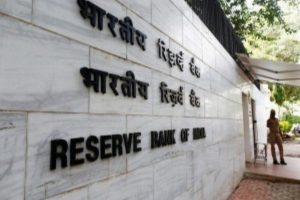Sometimes life becomes a story of ironies: so too news of Tata Sons considering buying a large stake in Jet Airways. Tata Sons, that started Air India, could now rescue Air India’s rival while walking away from helping Air India itself.
The irony continues. In 1948, JRD Tata’s ‘Air India International’ took off to be one of the best airlines in a fledgling global civil aviation industry. India was then an economically weak country with a GDP of Rs 90 billion. Yet on 11 June 1962, Air India became the first airline in the world to own a fleet exclusively of jet aircraft. It set benchmarks for innovation and quality service.
Advertisement
Five decades later, India ranks as the world’s sixth wealthiest country with US$ 8.2 trillion (AfrAsia Bank Global Wealth Migration Review, 2018), but ironically the national carrier has over $7 billion (approx Rs 50,000 crores) debt. Air India has become the butt of jokes, while India overtakes Britain and France to become the world’s fifth largest economy (International Monetary Fund’s GDP ranking, 2020).
Some more irony: Air India was an industry role model for Singapore Airlines when Singapore Airlines was launched in 1972. Five decades later, Singapore Airlines – ranked the world’s leading airline – considers buying a stake in Air India with as much trepidation as dealing with a deadly disease.
Despite problems infecting it, Air India remains my favorite airline.
I feel at home aboard the national carrier. Air India may lack glamour, but it also lacks the fake smiles from crew of some private airlines. India’s national carrier may be erratic like India, but Air India’s hospitality, as with generous legroom for all passengers, has genuine warmth and good-heartedness that private airlines somehow lack.
So, as with India and some its respected institutions, I never lose hope about Air India’s future. In the cycle of history, its glory days will return.
Air India’s revival needs fundamental changes: such as keeping out political inference, and saboteurs like the former civil aviation minister who deliberately damaged it to favour a private airline.
As the national carrier, Air India needs to be given statutory protection to ensure professional running of a highly technical and quality service-oriented industry.
The irony of Air India struggling in one of the world’s biggest civil aviation markets is a story of a gold mine ruined with political meddling.
Air India’s resurgence can happen with changes. Getting rid of corrupt interference, coaxing trade unions into the quality mission, ending loss-making international routes, reducing free travel, a more homogeneous fleet (owning 10 different types of aircraft becomes a maintenance nightmare) – Air India can again be the success it was five ecades ago.
The world of air travel raves about the ‘Singapore Girl’, but India’s talented young generation can make the ‘Air India Smile’ as iconic.
The Air India history book teaches how JRD Tata ran the airline. He paid attention to the smallest detail, and once personally cleaned a dirty Air India aircraft toilet. The exceptional talent India has in various fields can be used to redesign and upgrade every aspect of Air India: aircraft exterior, cabin interior, crew uniforms, airport lounges, in-flight service, menu, its amateurish website (that even lacks sufficient ‘About Us’ biography) and new promotional campaigns, like the incredible Turkish Airlines ads.
The heavy red colour lines on the fuselage make Air India’s aircraft among the worst-looking in the world. Red and black are the two most negative colours – hues of the devil in hell – and appropriately used in Adolf Hitler’s red-black swastika symbol of the Nazi Party. Air India needs the three colours of India’s meaningful, beautiful national flag.
The fuselage design should include the ‘Asoka Chakra’ or Dhamma wheel in India’s flag – as the symbol of the eternal laws of nature, the wheel of Dhamma is the most powerful symbol in the universe. A new Air India logo, with a much better font style, needs to be re-positioned on the aircraft fuselage, as in the slick Lufthansa, Air France and Singapore Airlines fleet.
Air India staff can be given one-year plans with an annual focus: as with cleanliness – the Swachh Bharat Clean India Mission can help stop the national carrier giving bedbugs and cockroaches frequent flier miles. Focus on safety, punctuality, and having the friendliest, smiling crew in the industry.
The Air India of JRD’s days pampered the passenger, so pamper them again. Let Air India prove how the guest is god in India. Air India’s economy class passengers should receive the pampering other airlines offer in their business class. Respectfully treating every passenger will never be a loss.
Wiser to include international cuisine aboard international flights, not just serve our spicy Indian food. Leading airlines have different menus for First and Business Class, but Air India serves the same idli, uttappam, batata wada or Punjabi aloo rassa, Gobhi paratha and beetroot cutlet – the current menu for First and Executive Class passengers.
Singapore Airlines, which once looked up to Air India, has eight world-renowned chefs in its International Culinary Panel to decide flight menus – including India’s top chef Sanjeev Kapoor designing a special ‘Shahi Thali’.
Quality airlines like Swiss take good care of economy class passengers. For vegetarians, Swiss offers selections from Hiltl in Zurich, Guinness Book record holder as the oldest running vegetarian= restaurant in the world (since 1898).
An efficient, friendly national airline not only boosts India’s global profile, but will be part of the country in future getting similar tourist inflows as France, Spain, USA and China – the top four international tourist destinations. Where there is a will, there opens a way and soon hopefully Air India will fly the flag of a country that worships cleanliness and quality work.
The writer is a senior, Mumbai-based journalist.











